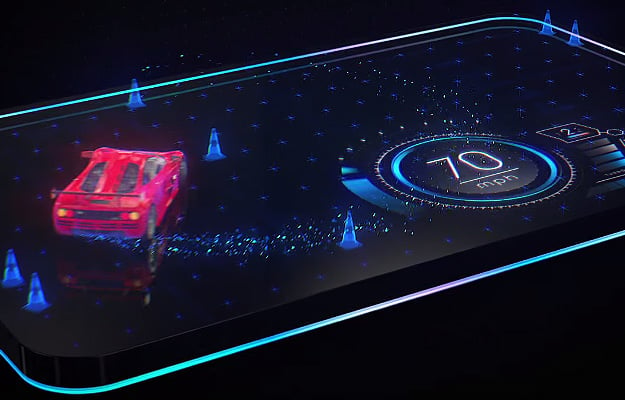RED's Hydrogen Holographic Smartphone Uses Leia Light Field Display Tech
Virtual reality and augmented reality experiences are nifty and all, but what ever happened to holographic technology? Surely that must be part of the future, as evidenced by R2-D2 conveying a message from Princess Leia in Star Wars. And maybe it will be. Fittingly enough, a company called Red Digital Cinema is working in partnership with Leia Inc., a spin-off of Hewlett-Packard, to create a holographic display for its forthcoming Hydrogen smartphone.

Red Digital Cinema, which is known for its high-end Hollywood movie cameras, announced its Hydrogen smartphone with a glasses-free holographic display back in July of this year. It then unveiled a prototype, the RED Hydrogen One, a month later. Billed as the first holographic media machine that can fit in your pocket, pricing is set to start at $1,195 for an aluminum model, with an even pricier $1,595 titanium model. And those are introductory prices.
Will it be worth it? We will have to wait and see. More importantly, how exactly does it work? Providing somewhat of an answer to that question, Red Digital Cinema CEO Jim Jannard formally announced his company's partnership with Leia, which is invested in light field holographic display technologies. That gives us a big hint as to what is going on.
Light field displays consist of multiple layers of LCDs that use a directional backlight. This produces a 3D effect by letting viewers see an object with each eyeball. Then as you rotate the display—in this case, a smartphone—objects would like they are coming off the screen.
"Leia leverages recent breakthroughs in nano-photonic design and manufacturing to provide a complete light field 'holographic' display solution for mobile devices, through proprietary hardware and software. The Silicon Valley firm commercializes LCD-based mobile screens able to synthesize light field holographic content while preserving the normal operation of the display," Red explains.
That last bit suggest that users will be able to turn off the holographic option to use the smartphone like any other handset, though it remains to be seen exactly how this technology will be implemented.

Red Digital Cinema, which is known for its high-end Hollywood movie cameras, announced its Hydrogen smartphone with a glasses-free holographic display back in July of this year. It then unveiled a prototype, the RED Hydrogen One, a month later. Billed as the first holographic media machine that can fit in your pocket, pricing is set to start at $1,195 for an aluminum model, with an even pricier $1,595 titanium model. And those are introductory prices.
Will it be worth it? We will have to wait and see. More importantly, how exactly does it work? Providing somewhat of an answer to that question, Red Digital Cinema CEO Jim Jannard formally announced his company's partnership with Leia, which is invested in light field holographic display technologies. That gives us a big hint as to what is going on.
Light field displays consist of multiple layers of LCDs that use a directional backlight. This produces a 3D effect by letting viewers see an object with each eyeball. Then as you rotate the display—in this case, a smartphone—objects would like they are coming off the screen.
"Leia leverages recent breakthroughs in nano-photonic design and manufacturing to provide a complete light field 'holographic' display solution for mobile devices, through proprietary hardware and software. The Silicon Valley firm commercializes LCD-based mobile screens able to synthesize light field holographic content while preserving the normal operation of the display," Red explains.
That last bit suggest that users will be able to turn off the holographic option to use the smartphone like any other handset, though it remains to be seen exactly how this technology will be implemented.

